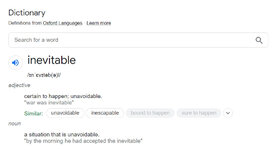T1 was determined solely by the state of the universe at point T0
So, your first problem is looking at it from the perspective of one object only interacting with itself.
Instead, it is better to view it as two objects interacting with each other.
One of the objects is best seen as a "process definition", like the operational configuration of the CPU, or it's "truth table".
The second of the objects is best seen like a memory array.
The "truth" of the system (it's physics) is then entirely independent of the contents of the system (it's momentary state description).
As such, the state of the universe at T1 is not determined solely then by the state of the universe at T0. It is determined by BOTH the state at T0 AND the truth of the system.
This is a very important thing to understand because considering "could" is doing a
thought experiment.
The goal of the thought experiment is to get as close to the following
actual experiment as possible:
1. The dwarf is there, and I am going to make them do something, thus I stop my sub-universe and save it's state.
2. I copy the state.
3. I blindly write, to each of the copies, a will into the dwarf's head.
4. I run the system forward to see what is going to happen in each.
5. I find out all the things that the dwarf can "possibly" do, as an extension of the original state. this takes a great deal of time. This actually maps out a function U(x), where x is what is known in math as a "free variable". The free variable here is "the contents of the dwarf's head."
6. Armed with this U(x) function definition on the contents of the dwarf's head, I then set U(x) equal to the desired contents and then solve for x. This tells me what momentary x leads to the desired outcome.
7. I then put x in the dwarf's head, leaving behind the original universe entirely, and continuing with this one in which I mind controlled the dwarf.
Then the next part is that you need to realize there needs be no god or actual mind control going on here because the "dwarf" in our reality has the power to approximate U well enough,
in macrophysical scale, to run this process themselves without having to stop time to run the solution.
The end result ends up being something like:
1. I am going to make ME do something, thus I stop my activity and think
quickly, before I must make a decision.
2. I imagine a universe as macrophysics describes it, several times. (I make a copy).
3. I blindly write, to each of the copies, a series of stated actions. (I write a will
into my own hypothetical head).
4. I run the system forward to see what is going to happen in each.
5. I find out all the things that the I can "possibly" do, in this hypothetical future moment, as an extension of the original state. this takes a little time, but not enough to actually bring me to the real future moment in which a decision must be made. This actually maps out a function U(x), where x is what is known in math as a "free variable". The free variable here is "the contents of my decision".
6. Armed with this approximal U(x) function definition on the contents of the my own head head, I then set U(x) equal to the desired contents and then solve for x. This tells me what momentary x leads to the desired outcome.
7. I then put x in the part of my own head that represents the region of free variance,
thus making the decision leaving behind the past entirely, and continuing with this future in which I effectively mind controlled myself.
The fact that it was ME putting that variable there into MY OWN head is, exactly, the proof of free will.
That we can only ever approximate perfection here does not invalidate it, it just means sometimes we're going to be wrong.
When we are wrong, we don't say "we lacked free will", as we still decided for ourselves (that will was free!), But rather "our will to do X was not free".
Note, this does not in any point discuss randomness.

